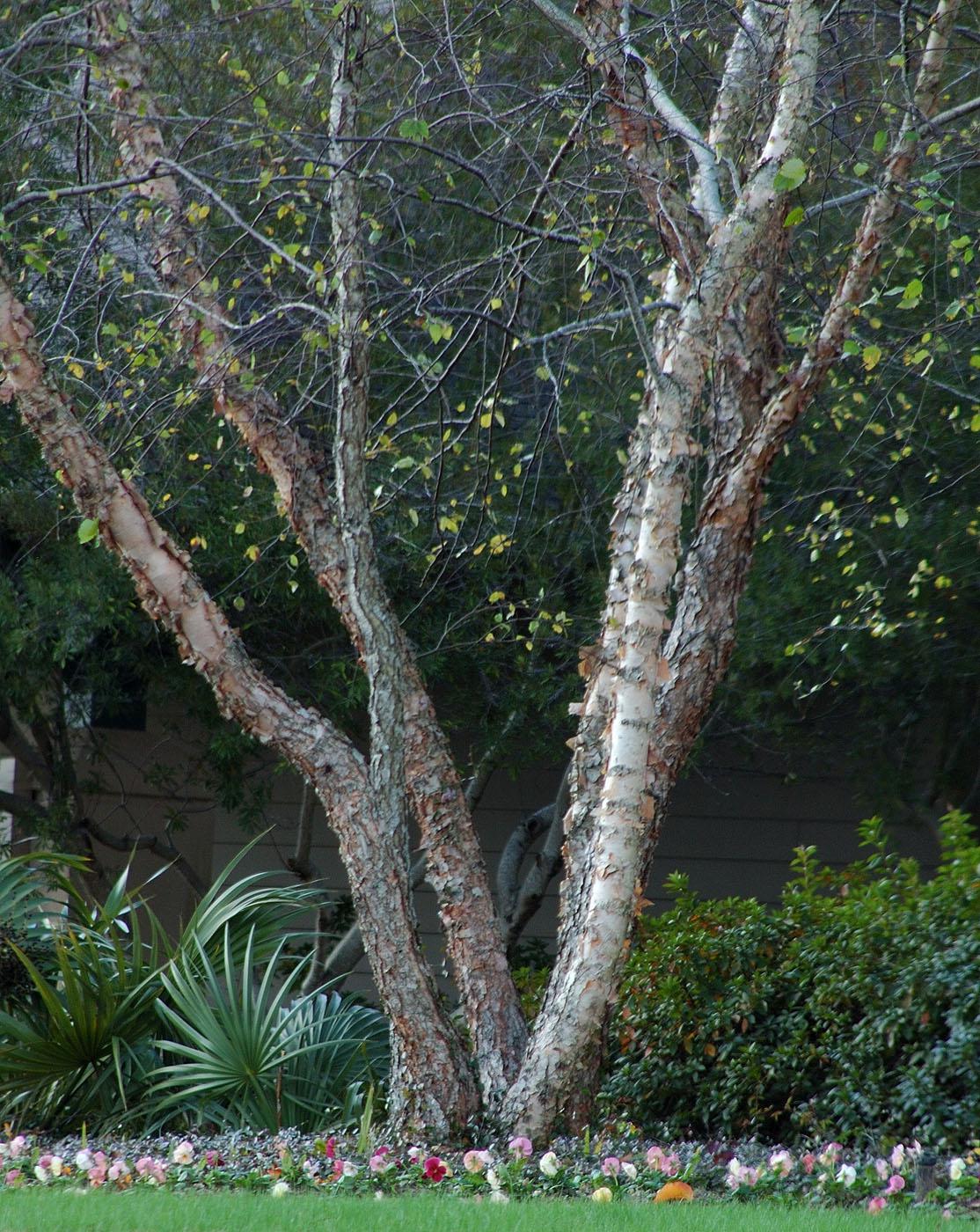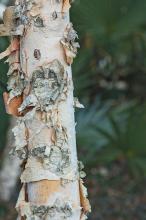Information Possibly Outdated
The information presented on this page was originally released on December 4, 2008. It may not be outdated, but please search our site for more current information. If you plan to quote or reference this information in a publication, please check with the Extension specialist or author before proceeding.
Native plants dazzle in winter landscapes
By Norman Winter
MSU Horticulturist
Central Mississippi Research & Extension Center
With few flowers blooming, our landscape's main interest at this time of year comes from differing textures.
I recently stumbled on a combination planting that featured natives in an awesome show of texture. Had I kept my eyes open, I would surely have seen Mother Nature, rather than a landscape architect, do it first. Nevertheless it struck me as a partnership worthy of writing about and photographing.
The two plants were the river birch Betula nigra and the dwarf palmetto palm Sabal minor. The river birch has been in cultivation since 1736 and is native from Minnesota to Texas and eastward from New England to Florida. The wood has been used for furniture and even wagon wheels.
In the winter landscape, it shows out like few other trees can do thanks to a bark that exfoliates into papery sheets, exposing inner bark that may be gray-brown, cinnamon-brown or salmon. Heritage is one of the most outstanding varieties with a salmon-colored bark. The inner bark is salmon white while young and turns to salmon brown as the tree ages. Heritage was selected as the 2002 Urban Tree of the Year by the Society of Municipal Arborists.
The variety Dura-Heat is gaining recognition as a choice selection for the southern part of the country. It forms a dense canopy and has a whitish bark.
Regardless of the variety you choose, the tree easily forms multiple trunks, adding to its beauty. The trees typically reach 30 to 40 feet tall after 20 years, and they may eventually reach 70 feet with a spread of 40 to 60 feet.
They grow best in full to part sun in moist, fertile soil. The river birch is an excellent specimen tree for home landscapes, parks, golf courses and campuses. They also look exceptional planted in groups.
I mentioned it in winter partnership with the dwarf palmetto palm. This palm is one of the most cold hardy in the country, perhaps beaten only by the needle palm. It is native from Oklahoma to the Carolinas and southward, and it is a bona fide zone 7 palm that can take bone-chilling temperatures of around minus 10 degrees.
There are now more than a half dozen named varieties. One variety is McCurtain, which is from McCurtain County, Okla., and has been grown farther north in the Tulsa area for more than 30 years.
The native habitat of the dwarf palmetto palm is similar to that of the river birch; it is found in low, moist, alluvial flood plains. The huge palmate leaves grow on a mostly trunkless plant that eventually reaches 8 to 10 feet tall and up to 5 feet wide. If you have ever tried to dig one from the wild, you'll know their roots go down far enough that you'll wish you hadn't started digging. Buy yours from a nursery instead. However, it is the deep roots that give it such cold hardiness.
When I roam through a stand of these palms, I always feel like I am in a “Jurassic Park” movie and that a T-rex or raptor may come around the corner. These large, dark green, palmate leaves contrast dramatically with the white to salmon-pink of the river birch bark.
When you use natives like these, you also are providing food for wildlife. Deer have been known to browse the leaves of the river birch while numerous birds find the black fruit of the palm to be a real treat.









